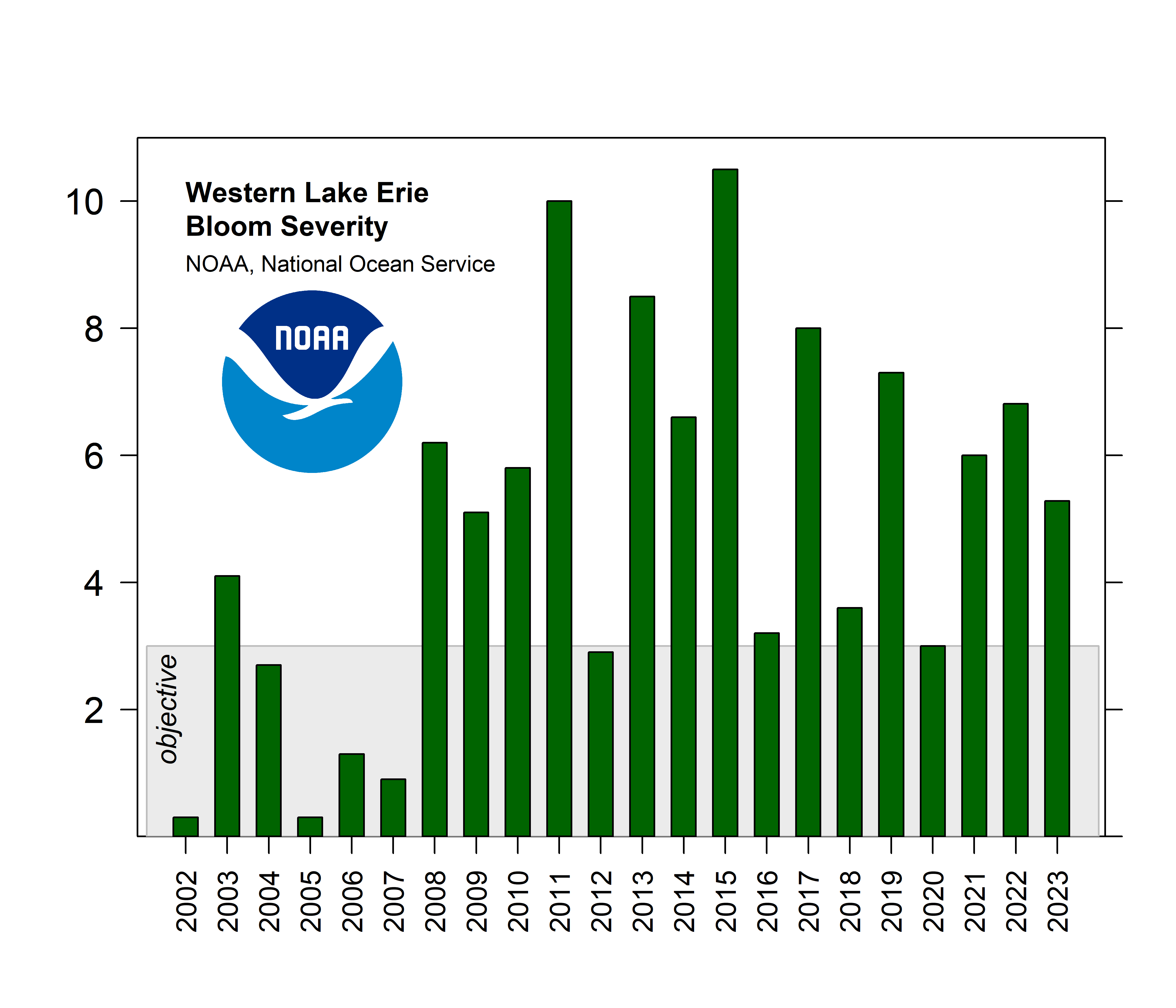
The 2023 western Lake Erie cyanobacterial bloom had a severity index (SI) of 5.3, which is moderately severe, and less intense than 2022 (SI of 6.8). The SI captures the amount of biomass over the peak 30-days of the bloom and is calculated using satellite imagery to assess bloom biomass and spatial extent.
The Microcystis bloom started at the beginning of July and was fully developed by mid-July. The bloom peaked in mid-August and persisted to early-September. At its peak, the Microcystis bloom covered 312 square miles. Unlike 2022, cooler temperatures and elevated winds in early-September reduced cyanobacterial biomass, although some bloom continued until mid-October.
In early September, field sampling confirmed the bloom shifted to a mix of Microcystis and Dolichospermum, which is historically seen later in the Lake Erie bloom season. The bloom stayed closer to the U.S. coast this year, primarily from Monroe, Michigan to Port Clinton, Ohio.
The seasonal forecasted bloom severity was originally between 2 and 4.5. The forecast was amended based on satellite imagery through July 25, and predicted a severity range of 4.5 – 5.5. This year’s bloom touts the second earliest start (following 2018) since 2002. The early bloom start likely allowed the cyanobacterial bloom to approach the higher end of the updated forecasted bloom severity (~5.5).
The seasonal forecast uses an ensemble of different models, which consider phosphorus loading into the lake during the spring and early summer. NOAA scientists will examine the differences between observed and predicted bloom severity in comparison with forecasts for previous years to evaluate the models.
For the full final bulletin and seasonal assessment, click here. For more information on the Lake Erie HAB forecast, click here.
